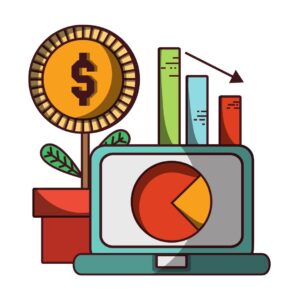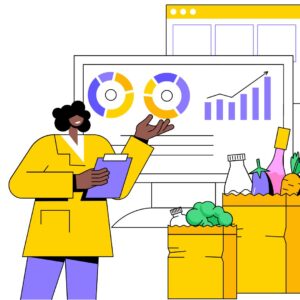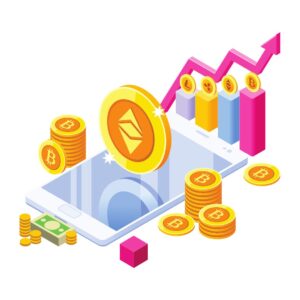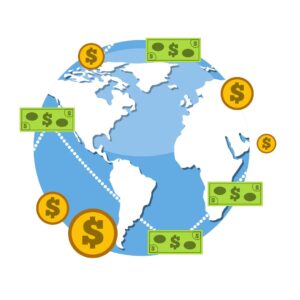Overview:
The IB Economics syllabus is designed to provide a comprehensive understanding of economic principles and theories. This course is offered at the Higher Level (HL), allowing students to explore economic concepts in greater depth.
Unit 1: Introduction to Economics

In this foundational section of the IB Economics syllabus, students will gain insight into the basics of economic theory. They will explore fundamental concepts such as scarcity, opportunity cost, and supply and demand, setting the stage for more advanced topics.
| Subtopic |
Subtopic Number |
Key points |
| What is Economics? |
1.1 |
- Economics is one of the Social Sciences. It studies human behavior as a relationship between ends and scarce means which have alternative uses.
- Scarcity forces us to make choices as we do not have enough resources to produce all the goods/services that are desired.
|
| How do Economists approach the world? |
1.2 |
- Opportunity cost: The next best alternative forgone.
- The PPC is also called production possibility frontier, production possibility boundary and production transformation curve.
- The PPC curve shows the various combinations of two commodities that can be produced by an economy with the given resources and given technology.
|
Unit 2: Microeconomics

Moving forward in the economics HL syllabus, we delve into microeconomics. Here, students will study the behavior of individual economic agents—households, firms, and industries. Concepts like market structures and price determination will be explored in detail.
| Subtopic |
Subtopic Number
|
Key points |
| Demand |
2.1 |
- Demand is a quantity of a commodity which a consumer wishes to purchase at a given level of price and during a specified period of time.
- The law of demand states that quantity purchased varies inversely with price.
- The Marginal Benefit Theory: It is a maximum amount a consumer is willing to pay for an additional goods or services.
- Other than price, the other factors which affect the demand of a commodity are known as non-price determinants.
- The non-price determinants consist of: Income, price of related goods, Tastes and preferences and Demographics.
HL Only:
- The income and substitution effects
- Law of Diminishing Marginal Utility
|
| Supply |
2.2 |
- The law of supply states that quantity purchased varies directly with price. The higher the price, the larger the quantity produced.
- The non-price determinants consist of: Cost of production, price of related goods, taxes, subsidies, Technology, number of firms, expectations and supply shocks.
HL Only:
- Law Diminishing Marginal Returns
- Increasing marginal costs
|
| Competitive Market Equilibrium |
2.3 |
- Demand and Supply curves in determining market equilibrium(Shifting of curves to form new market equilibrium)
- Social Surplus: It is defined as the point at which the SUM of consumer surplus and producer surplus is highest.
- Allocative efficiency: It means that the resources are allocated in such a way that the entire society benefits from the consumption, it answers the question, “What to produce?”
- Productive efficiency: It means producing with the fewest possible resources, it answers the question, “How to produce?”
HL Only:
- Determining consumer and producer surplus from a diagram.
|
| Critique of the Maximizing Behavior of Consumers and Producers |
2.4 |
- Consumers’ surplus is a measure of consumer welfare and is defined as the excess of social valuation of product over the price actually paid.
- Producer surplus is the total amount that a producer benefits from producing and selling a quantity of a good at the market price.
HL only:
- Rational Consumer Choice:
○ Assumptions: Consumer rationality, utility maximization, perfect information
○ Behavioral economics: Limitations of assumptions made in consumer rationality which include biases, self-control, bounded rationality, selfishness and imperfect information
- Behavioral economics in action:
○ Choice architecture: consists of default, mandated and restricted
○ Nudge Theory
- Business Objectives: primarily include profit maximization and alternative objectives are market share rise, growth of the business, corporate social responsibility and satisficing.
|
| Elasticity of demand |
2.5 |
- Elasticity of demand is a measure of the degree of responsiveness of quantity demanded of a good to a change in its price or income or price of related goods.
- PED is a measure of responsiveness of the quantity demand of a product to the change in its price.
- Factors affecting PED: Nature of commodity, substitutes, proportion of income, addiction, time period.
- XED is a measure of responsiveness of the quantity demand of a product to the change in price of related products or substitute products.
- YED is a measure of the responsiveness of demand to changes in income, and involves demand curve shifts.
- Importance of PED for companies and the government to make decisions.
HL Only:
- Changing PED along a straight demand curve(diagram inclusive)
- Reasons as to why the PED for primary commodities is mostly lower than manufactured products
- YED for firms and sectoral structure of the economy
|
| Elasticity of supply |
2.6 |
- Elasticity of supply is the degree of responsiveness of supply of a commodity due to change in its price.
HL Only:
- Reasons as to why the PES for primary commodities is mostly lower than manufactured products
|
| Role of Government in Microeconomics |
2.7 |
- Indirect tax: It is a tax placed on the producer (his produced goods and services) which is then partly (partly paid by producer & partly by consumers) passed on to consumers in the form of higher prices.
- Subsidy: It is assistance by the government to individuals or firms like low interest or interest free loans to students, providing goods and services below the market price by the government.
- Price control: It is the setting of maximum/minimum prices by the government so prices can’t adjust to equilibrium. This causes excess demand or excess supply because there is disequilibrium.
HL Only:
- Consumer Nudges
- Calculating the effects on markets and stakeholders of maximum and minimum prices, indirect taxes and subsidies
|
| Market Failure–Externalities and Common Pool or Common Access Failures
|
2.8 |
- Market Failure: It occurs when the price mechanisms (forces of supply and demand) fail to allocate resources efficiently.
- An externality occurs when producer’s/consumer’s actions have positive/negative effects on other people not involved in the actions.
- Negative production externalities are external costs created by producers.
- Negative production externalities are external costs created by consumers.
- Positive externalities occur when production and consumption create benefits to third parties.
- Government intervention and policy implementation due to externalities and common pool resources and the strengths and weaknesses of these policies.
- International Cooperation: monitoring, enforcement, challenges in international cooperation and sustainability issues
HL:
Calculating welfare loss from diagram |
| Market Failure–Public Goods
|
2.9 |
- A private good is rivalrous and excludable.
- A public good is non-rivalrous and non-excludable (AKA pure public good)
- A Quasi-public good is non-rivalrous but excludable.
- Free Rider Problem: It comes from non-excludability because people can’t be excluded from the use of a good. Because of the Free Rider Problem, private firms don’t make these goods, so there is resource misallocation.
|
| (HL) Market Failure–Asymmetric Information
|
2.10 |
- In any transaction, a state of asymmetric information exists if one party has information that the other lacks.
- Private and government responses to asymmetric information
|
| (HL) Market Failure–Market Power
|
2.11 |
- According to this theory, market failure results when power is concentrated into too few hands. A monopoly is a single provider of a product or service.A monopoly abuses their power by increasing prices.
- Types of competition: Perfect and Imperfect with their features and equilibrium diagrams in terms of loss, profit and supernormal profit
- Types of market under imperfect competition with their features and equilibrium diagrams in terms of loss, profit and supernormal profit:
○ Monopoly
○ Monopolistic Competition
○ Oligopoly
- Government intervention methods in response to abuse of market power including fines, legislation and regulation and government ownership
|
| (HL) The Market’s Inability to Achieve Equality
|
2.12 |
- Equity (fairness) issues. Markets can generate an ‘unacceptable’ distribution of income and consequent social exclusion which the government may choose to change.
|

Unit 3: Macroeconomics

In this IB economics syllabus, the macroeconomics unit takes center stage. This section focuses on the broader aspects of the economy, including national income, inflation, and government policies. Macroeconomic theories and models will be thoroughly covered.
| Subtopic |
Subtopic Number |
Key points |
| Measuring Economic Activity and Illustrating its Variations |
3.1 |
- The circular flow of income or circular flow is a model of the economy in which the major exchanges are represented as flows of money, goods and services, etc. between economic agents.
- Measures of economic activity: It involves measuring an economy’s national income. There are 3 approaches: Expenditure, income and output.
- Different Measures of Value of Output: GDP, GNI.
- Fluctuations in the growth of real output, consisting of alternating periods of expansion (increasing real output) and contraction (decreasing real output) are called the Business Cycle.
|
| Variations in Economic Activity—Aggregate Demand and Aggregate Supply
|
3.2 |
- Aggregate demand (AD): The total quantity of aggregate output (real GDP) that all buyers want to buy at different price levels, ceteris paribus.
- Aggregate supply (AS) – total quantity of goods/ services produced in an economy over a time period at different price levels.
- Keynesian Model: It bases ideas on John Maynard Keynes’ work. It showed that it is possible for economies to stay in the short run equilibrium for long periods of time.
- Keynesian Multiplier: It is the ratio of change in national income (real GDP) arising from a change in government spending.
|
| Macroeconomic Objectives
|
3.3 |
- Economic Growth and its consequences
- Low unemployment
- Low and stable rate of inflation
HL Only:
- Sustainable level of national debt – measuring national debt in terms of GDP, relationship between budget deficit and national debt and costs of high national debt
- Phillips Curve – relationship between unemployment and inflation in short and long run and AD/AS curves
- Calculating weighted price index, with the provision of data
|
| Economics of Inequality and Poverty
|
3.4 |
- Economic growth
- Equity in the distribution of income
- Poverty – Definition, causes and measurements of poverty
- Taxes, its types and how taxation reduces poverty and wealth inequality
- Other policies to reduce poverty, income and wealth inequality
HL Only:
- Lorenz curve with income quintile data
- Calculating the amount of indirect tax paid from a certain expenditure with the indirect tax rate
- Calculating total average tax rates
|
| Demand Management (Demand-Side Policies)—Monetary Policy
|
3.5 |
- Demand-side policies focus on changing AD (shift of AD curve) to achieve price stability, full employment, and economic growth.
- Monetary policy is carried out by the central bank of each country. They manipulate the rates of interest to induce changes in the aggregate demand.
- Easy (expansionary) monetary policy is the policy that increases the money supply to expand AD.
- Tight (Contractionary) monetary policy is the policy that decreases the money supply to lower AD.
HL only:
- Money creation by commercial banks
- Tools of monetary policy – Open market operations, minimum reserve requirements, quantitative easing and lending rate of central bank
- Determination of equilibrium interest rates(inclusive of diagrams)
|
| Demand Management—Fiscal Policy
|
3.6 |
- Fiscal policy: A demand-side policy that uses two instruments: tax and government expenditure. The government is in charge of this policy.
- Expansionary fiscal policy is fiscal policy that aims to eliminate a recessionary gap by increasing aggregate demand.
- Contractionary fiscal policy is fiscal policy that aims to close an inflationary gap by decreasing AD.
HL Only:
- Keynesian Multiplier and problems including it
- Fiscal policy effectiveness – crowding out
- Automatic Stabilizers – Progressive taxes and unemployment benefits.
|
| Supply-Side Policies |
3.7 |
- Supply-side policies focus on the production and supply side of the economy, especially on shifting the LRAS or Keynesian AS curve rightwards.
- Interventionist supply side policies: These policies presuppose that the free market cannot achieve the results of increasing potential output and government intervention is required.
- Market-based supply side policies: In this view, real GDP tends to the long run equilibrium, so the government doesn’t have to focus on stabilization as much as creating conditions that let the market forces work well.
|
Unit 4: Global Economy

The economics HL syllabus expands to encompass the global economy. This unit investigates globalization, trade agreements, and international economic interactions. Students will analyze how countries engage economically on a global scale.
| Subtopic |
Subtopic Number |
Key points |
| Benefits of International Trade |
4.1 |
- International trade – buying and selling of goods/services across international boundaries.
- Benefits of International trade: Increases in domestic production and consumption due to specialization, Economies of scale in production, Greater choice for consumers, Increased competition and greater efficiency in production, Lower prices for consumers, Acquiring needed resources, “Engine for growth”.
HL Only:
- Absolute and Comparative Advantage – Opportunity costs(Linear PPC diagram showing the differing opportunity costs and), gains from trade and sources of comparative advantage
- Limitations to theory of comparative advantage
|
| Types of Trade Protection |
4.2 |
- Trade protection – Government intervention with trade barriers to prevent free entry of imports or protect the economy from foreign competition.
- Tariffs (custom duties) are taxes on imported goods. They are used to protect a domestic industry from competition (protective tariff) or to raise government revenue (revenue tariff).
- Quotas – legal limit to quantity that can be imported over a time period. Similar effects as tariffs, but without gov’t revenue.
- Production subsidies – payments from gov’t to domestic firms that compete with imports
- Administrative barriers are obstacles to imports.
HL Only:
- Calculating the effects on stakeholders of tariffs, quotas and subsidies
|
| Arguments for and Against Trade Control/Protection |
4.3 |
- ARGUMENTS AGAINST TRADE PROTECTION
- Protection worsens the allocation of resources.
- Only producers and workers gain from trade protection
- Producer gain has a cost of higher production costs and reduced efficiency
- ARGUMENTS FOR TRADE PROTECTION
- Infant industry – new domestic industry that is unable to compete with other competitors as it hasn’t reached economies of scale.
- Strategic trade policy – argument in favor of protection that calls for high tech industries to help developed countries achieve economies of scale.
- National defense industries should be protected so a country can produce them by themselves.
- Free trade vs. trade protection
|
| Economic Integration |
4.4 |
- Economic integration – economic cooperation between countries and coordination of economic policies that increase economic links.
- Trading bloc – group of countries that agree to reduce barriers for freer trade and cooperation.
- Trade Creation – It refers to the situation where countries can trade without or with minimum trade barriers.
- Trade Diversion – It refers to the situation where lowers cost imports are replaced by higher cost imports from a member after the formation of a trading bloc.
- Terms of Trade: It is a term that relates the price that a country receives for its exports to the price it pays for its imports.
- Monetary Union
- Influence of WTO and factors affecting the influence
HL Only:
- Trade Creation and trade diversion
- Advantages and disadvantages of monetary union
|
| Exchange rate |
4.5 |
- Exchange rate: the value of one currency for the purpose of conversion to another.
- In a freely floating exchange rate system, the market determines the exchange rates.
- Fixed exchange rate system – exchange rates are “fixed” by the central bank and do not respond to supply/demand changes.
- Managed exchange rates (managed float) combine both floating and fixed exchange rate systems, though it leans towards the “float” side.
HL Only:
- Fixed vs. Floating Exchange Rate Systems
|
| Balance of Payments |
4.6 |
- The balance of payments is a record of all transactions between the residents of a country and the residents of other countries.
- If imports > exports, there is a deficit in the trade balance, which makes it likely for there to be a current account deficit.
- J curve: The effect of currency depreciation on the trade deficit depends on price elasticity of demand for exports and imports.
HL Only:
- Relationship between current account and exchange rate(Diagram inclusive)
- Relationship between financial account and exchange rate
- Implications of a persistent current account deficit with respect to – exchange rates, interest rates, debt, credit ratings, foreign ownership of domestic assets, demand management and economic growth
- Fixing persistent current account deficit
- Marshall-Lerner condition and J-curve effect(diagram inclusive)
- Implications of a persistent current account surplus with respect to – exchange rates, inflation, employment, export competitiveness and domestic consumption and investment
|
| Sustainable Development |
4.7 |
- The report by the Brundtland Commission developed the most widely used definition of sustainable development as “development which meets the needs of current generations without compromising the ability of future generations to meet their own needs”.
HL Only:
- Relationship between sustainability and poverty
|
| Measuring Development |
4.8 |
- Economic development – process that leads to improved standards of living for a population.
- Measures of economic development: GDP, GNI per capita, HDI, Life expectancy.
|
| Barriers to Economic Growth and/or Economic Development |
4.9 |
- Barriers to Economic growth/development: high population growth rates, high illiteracy rates, poor infrastructure, human capital inadequacies, foreign currency gap and capital flight, unsafe water supplies, inadequate housing facilities, ethnic and religious conflict, corruption, poor governance, poor health services, primary product dependency, declining terms of trade.
|
| Economic Growth and/or Economic Development Strategies
|
4.10 |
- Trade liberalization
- Export promotion
- Promotion of FDI
- Removal of government subsidies
- Floating exchange rate systems
- Microfinance schemes
- Privatisation
- Development of human capital
|
Frequently Asked Questions (FAQs)
Q1: What topics are covered in the IB Economics syllabus?
A: The IB Economics syllabus covers a range of topics related to economics, including microeconomics, macroeconomics, international trade, development economics, and market failure.
Q2: How is the IB Economics course assessed?
A: The IB Economics course is assessed through a combination of internal and external assessments. Internal assessments include written assignments and oral presentations, while external assessments include written exams and a research project.
Q3: What skills do students need to succeed in IB Economics?
A: Students in IB Economics need to have strong analytical, problem-solving, and communication skills. They should also be able to apply economic concepts to real-world situations, and be comfortable with quantitative analysis and data interpretation.
Q4: How is the IB Economics course different from other high school economics courses?
A: The IB Economics course is designed to be more rigorous and in-depth than other high school economics courses. It emphasizes a conceptual understanding of economic concepts, as well as practical skills such as case analysis, research, and data analysis.
Q5: What are the benefits of taking the IB Economics course?
A: Taking the IB Economics course can provide students with a strong foundation in economics that will prepare them for future studies in the field. It can also help students develop critical thinking and problem-solving skills that are valuable in a wide range of careers. Additionally, the IB Economics course is recognized by colleges and universities around the world, which can be beneficial for college admissions.












